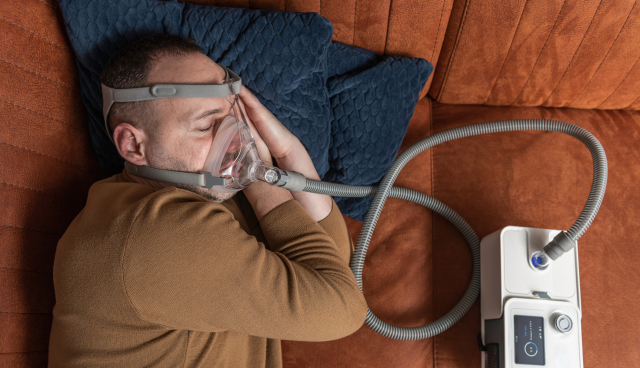
Hypoxemia: Understanding Low Blood Oxygen Levels
Hypoxemia refers to abnormally low levels of oxygen in the arterial blood, typically indicated by oxygen saturation levels below 90%. This dangerous condition can have severe consequences if left untreated, so it’s important to understand its causes, symptoms, and available treatments.
What is Hypoxemia?
Hypoxemia occurs when arterial oxygen tension or saturation falls below the normal range. Oxygen saturation measures the percentage of haemoglobin binding sites occupied by oxygen in the blood. Normal levels are 95-100%.
Hypoxemia indicates an oxygenation problem preventing sufficient oxygen from reaching bodily tissues and organs. Even brief periods of low oxygen can damage cells. Prolonged hypoxemia can have serious effects like organ failure. That’s why it’s critical to address low blood oxygen quickly.
Causes of Hypoxemia
There are several potential underlying causes of hypoxemia, including:
- Lung diseases like pneumonia, COPD, pulmonary edema, or pulmonary embolism. These restrict oxygen transfer in the lungs.
- Heart disease or heart failure leading to inadequate oxygen circulation.
- Anaemia reducing haemoglobin levels and oxygen carrying capacity.
- Carbon monoxide poisoning preventing oxygen binding to haemoglobin.
- Severe asthma complicating breathing.
- Sleep apnea interrupting nighttime breathing.
- High altitudes making oxygen diffusion more difficult.
- Obesity compounding respiratory function.
- Respiratory muscle weakness hindering breathing.
Symptoms of Hypoxemia
The most common hypoxemia symptoms include:
- Shortness of breath
- Rapid, shallow breathing
- Wheezing or gasping for air -Confusion or reduced mental alertness
- Increased heart rate
- Cough or chest tightness
- Cyanosis – blue tinge to skin, lips or nail beds
- Fatigue or lethargy
- Headache or dizziness
- Nausea
What’s Considered a Dangerously Low Oxygen Level?
Normal blood oxygen saturation is 95-100%. Oxygen levels below 90% are concerning. Saturation below 80% indicates severe hypoxemia requiring emergency intervention.
Here’s a more detailed overview:
- 95-100% – Normal
- 90-95% – Mild hypoxemia
- 80-90% – Moderate hypoxemia
- Below 80% – Severe hypoxemia, very dangerous

How to Improve Low Blood Oxygen
Treating the underlying cause is the key to remedying hypoxemia. Other strategies used to
improve oxygenation include:
- Supplemental oxygen – Given through nasal cannula, face mask or hyperbaric chamber.
- Mechanical ventilation – Uses a ventilator to deliver air when breathing insufficient.
- Treating heart failure – With medications like diuretics, ACE inhibitors, beta blockers.
- Treating lung diseases – Such as antibiotics for pneumonia, bronchodilators for COPD.
- Transfusion for anaemia – To increase haemoglobin levels.
- ECMO (Extracorporeal Membrane Oxygenation) – Pumps and oxygenates blood outside the body.
- Surgery – To address root causes like pulmonary embolism or enlarged heart.
Lifestyle measures can also help optimize lung function and oxygenation, such as:
- Smoking cessation
- Losing excess weight
- Avoiding high altitudes
- Breathing exercises
- Pulmonary rehabilitation
Frequently Asked Questions About Bronchiectasis
Oxygen saturation below 80% is considered severely low and dangerous. Levels below 90% are concerning and warrant medical assessment. Anything under 60% for prolonged periods risks death or permanent organ damage.
There’s no direct “cure” for hypoxemia itself, but treating the underlying condition causing it can resolve it. For example, antibiotics can cure pneumonia to restore lung function and oxygenation. Severe chronic lung disease can cause irreversible hypoxemia requiring permanent oxygen therapy.
In the last stages of hypoxemia before death, oxygen levels fall below 50% resulting in critical organ failure. Symptoms include severe confusion, agitation, hallucinations, seizures, loss of consciousness, and cardiac arrest. Without immediate intervention, prolonged saturation below 50% is fatal.
Conclusion:
Hypoxemia is a serious condition that shouldn’t be overlooked. Abnormally low blood oxygen can have major adverse effects throughout the body. Be aware of the common causes, like lung and heart disease, along with telling symptoms. Monitor your blood oxygen levels when needed. Seek prompt medical treatment for saturation below 90%. With the right diagnosis and care, most cases of hypoxemia can be successfully managed for positive outcomes.
